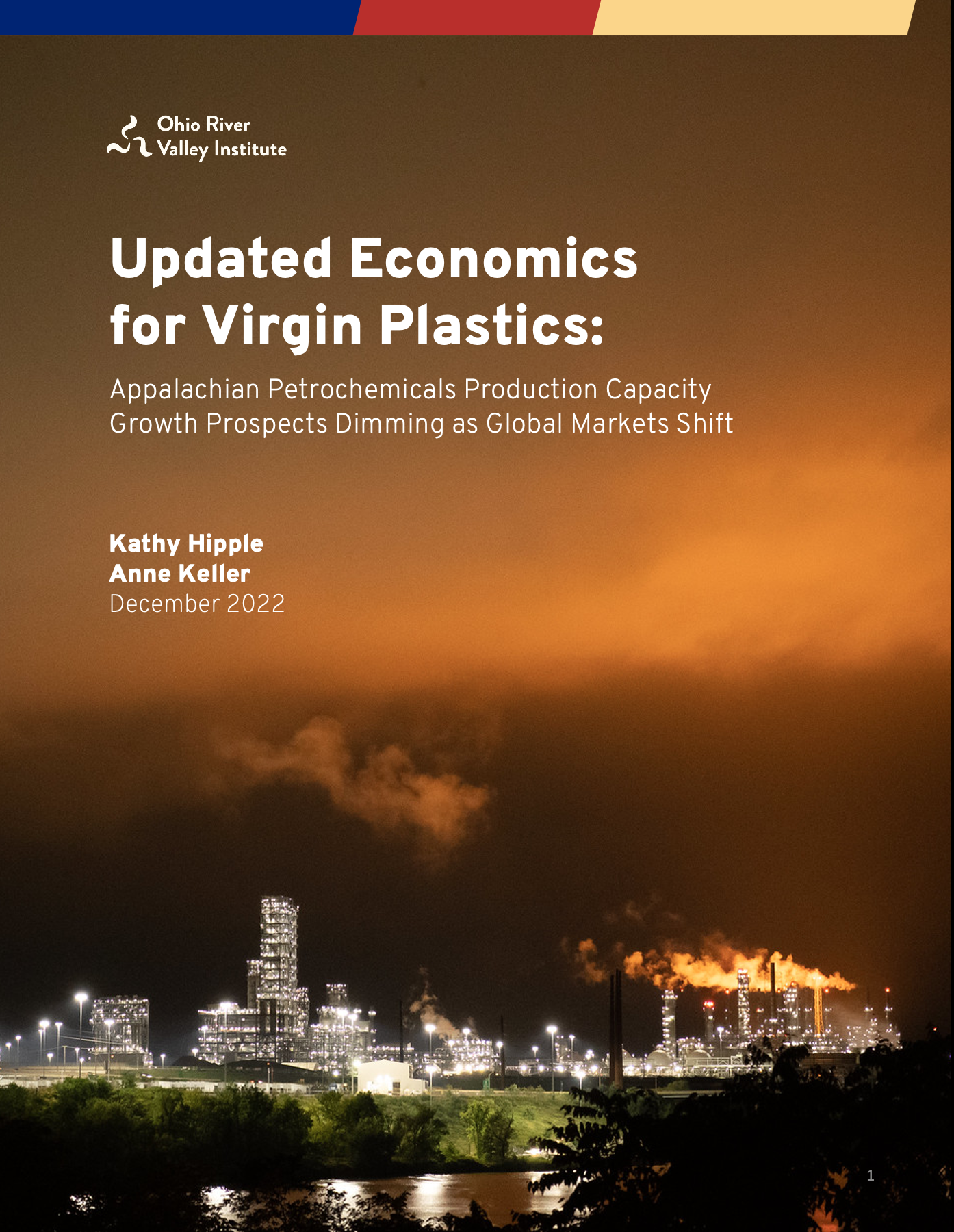In November 2022, Shell officially began production at its long-anticipated ethane cracker plant in Beaver County, Pennsylvania, churning out lentil-sized resin pellets, known as nurdles, by the ton. When it reaches full capacity, the complex will “crack” ethane into 3.5 billion pounds of plastic each year.
For more than a decade, policymakers and industry boosters have claimed Shell’s mammoth plastics facility would spur economic growth and renewed business investment, revitalizing the region’s economy. But data show that the project’s development has failed to deliver local prosperity thus far—since the plant’s announcement in 2012, Beaver County has fallen behind Pennsylvania and the nation in job growth, business development, population, and nearly every other measure of economic activity.
Now operational, will the Shell facility’s enormous polyethylene production change the economic trajectory of Beaver County? And will new petrochemical development follow in its footsteps, increasing Appalachia’s plastic production capacity?
Not likely, this report finds. The global petrochemical industry is facing a severe “cycle low,” raising serious questions about the viability of new petrochemical development in Appalachia and the profitability of Shell’s Beaver County cracker. Here’s how the market has changed:
- Global demand for virgin plastics is slowing alongside a wave of public concern about plastic waste, plastic bag bans, sustainability pledges from major packaging companies, and decarbonization targets.
- Appalachia’s ethane feedstock cost advantage has been eliminated. When visions of a regional petrochemical ‘renaissance’ first took shape, Appalachia had an oversupply of cheap, fracked ethane, but nowhere to sell it. Petrochemical plants provided a solution to this problem—they could take advantage of the region’s cheap ethane to produce plastics. But when new (and converted) pipelines opened up Appalachia’s trapped ethane reserves to other markets, assumptions about feedstock costs for Appalachian petrochemical facilities changed.
- Demand in China—once expected to be an enormous market for US polyethylene—has instead plummeted. The country’s aims to minimize the spread of COVID and grow domestic plastics supply, as well as the collapse of the Chinese real estate market and the polyethylene products that supply it, have crushed demand for US petrochemical products.
- The global polyethylene market has become extremely overbuilt. North America has grown virgin plastic production capacity by 60% since 2017. The oversupply has created a glut, threatening industry margins.
- The natural gas industry has become increasingly global, raising domestic prices toward world market levels. Securing more expensive, market-rate ethane changes margin assumptions for petrochemical facilities.
These market shifts have eroded the profit margins of petrochemical facilities like Shell’s. From 2021 to 2022, ethane “cracking” margins—the difference between the value of the ethylene produced and the cost of ethane feedstock—plummeted by 90%, and Shell’s petrochemicals division earnings dropped by $2.3 billion as capacity fell by 8%. The commodity plastics Shell’s facility creates are particularly vulnerable to market downturns, research shows.
In Appalachia, the natural gas industry is pivoting away from floundering petrochemical prospects. Natural gas producers that haven’t expanded beyond the region, like EQT, Range Resources, and Antero, are turning to other ventures, like liquified natural gas and blue hydrogen, in a last-ditch attempt to salvage their bottom line.
Today, it’s clear that the petrochemical “renaissance” once envisioned for Appalachia has largely failed. Plans for a sprawling regional build-out, complete with a network of world-class and small-scale ethane crackers, hydrogenation plants, an Appalachian Storage Hub, and 500 miles of new pipelines, were supposed to create more than 100,000 new jobs in the region. Shell’s Beaver County plant is the only remnant of this grand vision. Eroding plastics demand and a shaky global plastics market indicate it may be the region’s last petrochemical facility.

